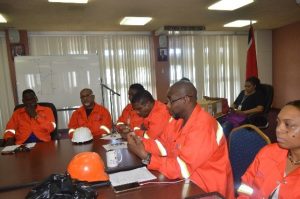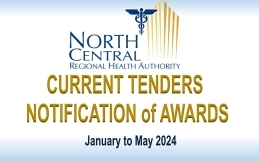Honourable Health Minister, Terrance Deyalsingh has praised the North Central Regional Health Authority’s (NCRHA) Incident Response Team (IRT) for its quick response in dealing with the recent medical crisis at the Piarco International Airport, its preparations for the passage of Tropical Storm Bret, and their handling of the power outage at the Eric Williams Medical Sciences Complex.
He said the effective management of the recent crisis by the IRT saved lives and prevented further injuries to passengers of the American Airlines flight that had recently experienced extreme turbulence en route to Trinidad.
“The establishment of the IRT has dramatically improved the NCRHA’s response – and by extension the country’s readiness in dealing with medical disasters as it bought a multi-disciplinary team together that can proactively manage our responses to medical and natural disasters that the country may face in the future,” said Deyalsingh.
He said among the first responders to the airline incident were teams from the NCRHA’s Accident and Emergency Department, NCRHA’s support and security staff, Global Medical Response TT and the local fire services.
The emergency teams were already on the tarmac when the airplane landed at Piarco International Airport at 10:30pm on August 2, less than 20 minutes after the pilot reported serious injuries following severe turbulence on the flight.
The Authority’s response was praised by passengers as well as the Ministry of Health as it provided the first real test of the emergency response procedures for a crisis event at the airport.
“Everything was in place for the emergency in less than 20 minutes after the pilot reported serious injuries following severe turbulence on the flight. Recognition must be made of the medical, security and first response teams who responded in an organized way as they were trained, to address disasters and medical emergencies. Their efforts and quick response contributed to calming down the hectic situation, thereby preventing further injury and the loss of life,” he added.
Minister Deyalsingh said the input from the IRT is important for boosting the confidence citizens can have in the public health sector, as the Ministry will continue its efforts at improving the service over time. This includes improving the sector’s response times to disasters, upgrading the patient experience and expanding the reach of the RHA’s primary care programs to address to rising incidence of NCDs.
“The NCRHA’s Incident Response Team was extensively trained in incident response management. This included an intensive program on disaster planning from internationally recognized safety training experts Falck Safety Services,” said NCRHA’s Chief Executive Officer, Mr. Davlin Thomas.
“The team has developed a number of protocols for dealing with crisis events, such as natural and man-made disasters which can result in a large number of casualties appearing in the emergency room. Some of the procedures that are triggered by a disaster event include the call-out of emergency staff as well as procedures for processing, transferring and the management of injured patients at emergency facilities,” he added.
During the American Airlines turbulence response, patients at the Eric Williams Medical Sciences Complex, the Arima District Hospital and the Chaguanas District Hospital were transferred between the facilities to free up beds for the new casualties expected from the nearby disaster.
Twenty three passengers from the American Airlines flight were injured during the turbulence and were sorted and treated on site. Those patients requiring critical care were stabilized and transported to the emergency rooms at the EWMSC and the Arima District Hospital.
Thomas said in preparation for the arrival of the flight, the emergency centers were alerted and adjustments were made to accommodate the expected increase in casualties.
The team performed advanced triage procedures at the airport to evaluate which patients were to be prioritized according to the severity of injuries. This action met international standards using the Canadian Triage System (CTS) that has been adopted at Emergency Departments throughout the NCRHA – the main difference, however, is that this triage procedure was executed at the disaster site.
Triage procedures were used to identify patients in need of immediate attention and it aided in determining the type of attention required by each patient. Injured passengers were transferred to the emergency room at the Arima District Health Facility and the Adult Emergency Department at the Eric Williams Medical Sciences Complex. All departments worked seamlessly together to ensure that all injured persons were addressed in a timely manner.
Thomas said the NCRHA is satisfied that the protocols worked effectively and the most appropriate care possible was administered in spite of the challenges responders usually face at disaster sites. He gave the assurance that the Authority will continue to be vigilant in implementing and improving systems and procedures to ensure that patients receive the best care in the timeliest manner as the hospital system is expected to play a key role in the nation’s response to disasters.







